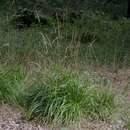en
names in breadcrumbs


Calamagrostis (reed grass or smallweed[3]) is a genus of flowering plants in the grass family Poaceae, with about 260 species[4] that occur mainly in temperate regions of the globe. Towards equatorial latitudes, species of Calamagrostis generally occur at higher elevations. These tufted perennials usually have hairless narrow leaves. The ligules are usually blunt. The inflorescence forms a panicle. Some may be reed-like.
The plants may be rhizomatous (underground stems with shoots), stoloniferous (with runners), or caespitose (growing in tufts or clumps). The bisexual spikelets have a single floret and generally they are purple or purple-brown. The spikelets are clustered into inflorescences, which usually develop in early- to mid-summer on long culms ( = stems).
Many species of Calamagrostis are morphologically similar, but they generally occur in distinct habitats, and they have unique geographical distributions. Given the subtle distinctions between many closely related taxa, there are several species complexes that could benefit from additional systematic study. Even the generic boundaries of the genus are controversial. For example, species in the genus Deyeuxia, distributed largely in the southern hemisphere are morphologically very similar to species of Calamagrostis. It may be appropriate to recognize all of these species in a single genus, but this will require detailed scientific study of DNA of species from around the world.
Some Calamagrostis can be very decorative, and are widely cultivated largely in northern temperate zones. The species Calamagrostis brachytricha[5] and the cultivar Calamagrostis × acutiflora 'Karl Foerster'[6] are recipients of the Royal Horticultural Society's Award of Garden Merit.
The word "Calamagrostis" is derived from the Greek word kalamos (reed) and agrostis (a kind of grass).
Calamagrostis contains the following recognised species:[7]
Calamagrostis (reed grass or smallweed) is a genus of flowering plants in the grass family Poaceae, with about 260 species that occur mainly in temperate regions of the globe. Towards equatorial latitudes, species of Calamagrostis generally occur at higher elevations. These tufted perennials usually have hairless narrow leaves. The ligules are usually blunt. The inflorescence forms a panicle. Some may be reed-like.
The plants may be rhizomatous (underground stems with shoots), stoloniferous (with runners), or caespitose (growing in tufts or clumps). The bisexual spikelets have a single floret and generally they are purple or purple-brown. The spikelets are clustered into inflorescences, which usually develop in early- to mid-summer on long culms ( = stems).
Many species of Calamagrostis are morphologically similar, but they generally occur in distinct habitats, and they have unique geographical distributions. Given the subtle distinctions between many closely related taxa, there are several species complexes that could benefit from additional systematic study. Even the generic boundaries of the genus are controversial. For example, species in the genus Deyeuxia, distributed largely in the southern hemisphere are morphologically very similar to species of Calamagrostis. It may be appropriate to recognize all of these species in a single genus, but this will require detailed scientific study of DNA of species from around the world.
Some Calamagrostis can be very decorative, and are widely cultivated largely in northern temperate zones. The species Calamagrostis brachytricha and the cultivar Calamagrostis × acutiflora 'Karl Foerster' are recipients of the Royal Horticultural Society's Award of Garden Merit.
The word "Calamagrostis" is derived from the Greek word kalamos (reed) and agrostis (a kind of grass).